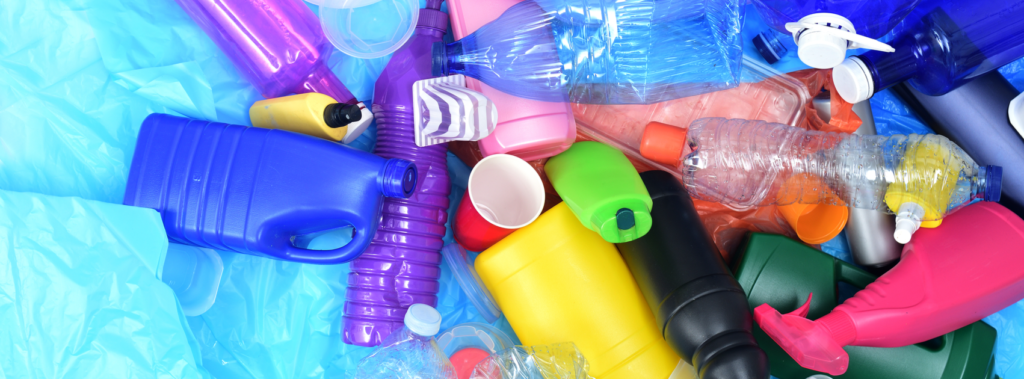Over the past few years we’ve all become more aware of plastic pollution and its environmental impact. Yet, plastic provides a durable, mouldable and hygienic solution for much of our household packaging, and unfortunately, in most instances it can’t simply be replaced by other materials. So what actually are plastics, how do they differ, and which types should we be using more or less of?
What are plastics?
All plastics are made from polymers. A polymer is a chemical compound that contains a large number of identical molecular repeating units, and can be synthetic or naturally occurring. They can be made from a renewable source (bio-based) or non-renewable (oil) and either can be engineered to biodegrade or not.
Polymers are moulded or shaped by pressure and temperature to create the packaging and plastic items we have in our homes. There are many different types of plastics, which is down to the type of polymer they are made up of. The type of plastic used is mainly selected because of its specific properties. For example, they can be flexible, hard, brittle, oven-heated, frozen or able to withstand harsh chemicals.

Which plastic packaging types are good, and which are bad?
There’s no simple answer when it comes to which plastic types are ‘good’ or ‘bad’. The first thing to consider is what properties the plastic needs to have to fulfill its specific function. Another important consideration is whether it’s recyclable or not.
Some plastic types are easier to recycle within our current recycling infrastructure. For example, hard Polyethylene Terephthalate (PET), which is the plastic used to make fizzy drink and water bottles is easy to recycle. Recycling plastic means it can be regenerated into a new plastic item, displacing the need for natural resources, saving energy and reducing landfill, this in turn reduces carbon emissions.
At the moment it’s difficult to recycle some types of plastic, such as Polystyrene (PS), which is often used for multi-packs of yoghurt, fast-food boxes, and to keep white goods protected during transportation. There is a huge amount of work being done to re-design packaging to use plastic types that are easier to recycle.
Eliminating problem plastics
Some single-use plastic packaging that can’t be recycled needs to go. And as soon as possible. WRAP is working with businesses through The UK Plastics Pact to eliminate single-use plastic items which have been identified as problematic or unnecessary.
The UK Plastics Pact accounts for 95% of supermarkets and the majority of brands they sell. Eight plastic items have been singled out to be eliminated by the end of 2020:
- Disposable plastic cutlery
- All polystyrene packaging (“Styrofoam”)
- Cotton buds with plastic stems
- Plastic stirrers
- Plastic straws
- Oxo-degradables that break down to create microplastics
- PVC packaging (often used for meat packaging and cling film)
- Disposable plastic plates and bowls.
The work doesn’t stop there. The UK Plastics Pact has challenged business to tackle the issues behind a wide range of other items in the near future, such as plastic film packaging, fruit net bags, sachets and plastic coffee pods.
It’s also important that we all play our part to reduce the plastics we use and to choose re-usable plastics whenever possible. However, it’s not a simple case of replacing plastic with something else. We need to remember that all materials have an environmental impact. Read our top tips here.
Should we choose natural plastics over synthetic?
Plastics can be either fossil-based or bio-based. To find out more about the difference, and the benefits and drawbacks of each, you can read our information on compostable and biodegradable plastics here.
What are the most common types of plastic?

Which plastics can I recycle?
Keep an eye out for the recycling labels on packs to get more information about your recycling options.
